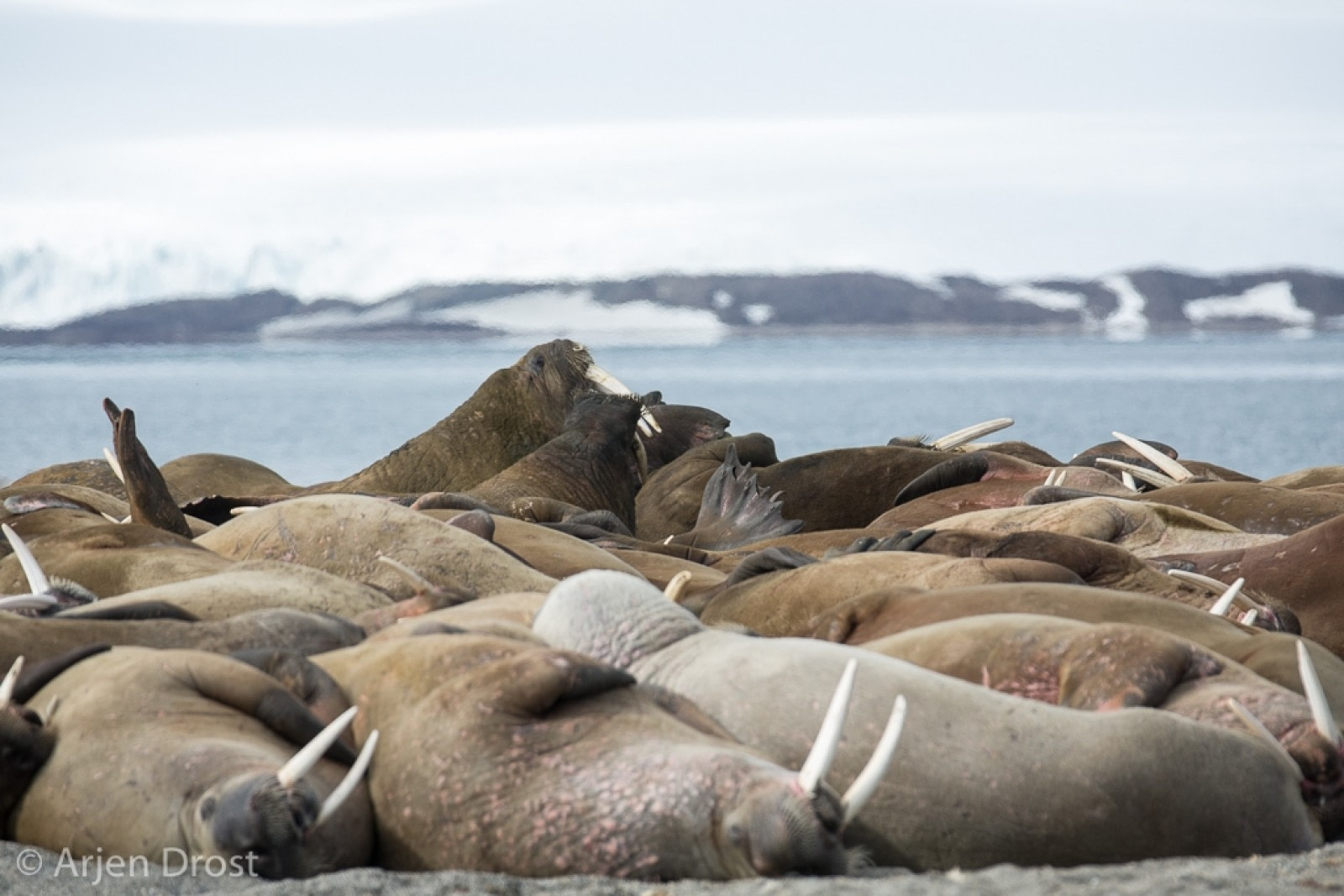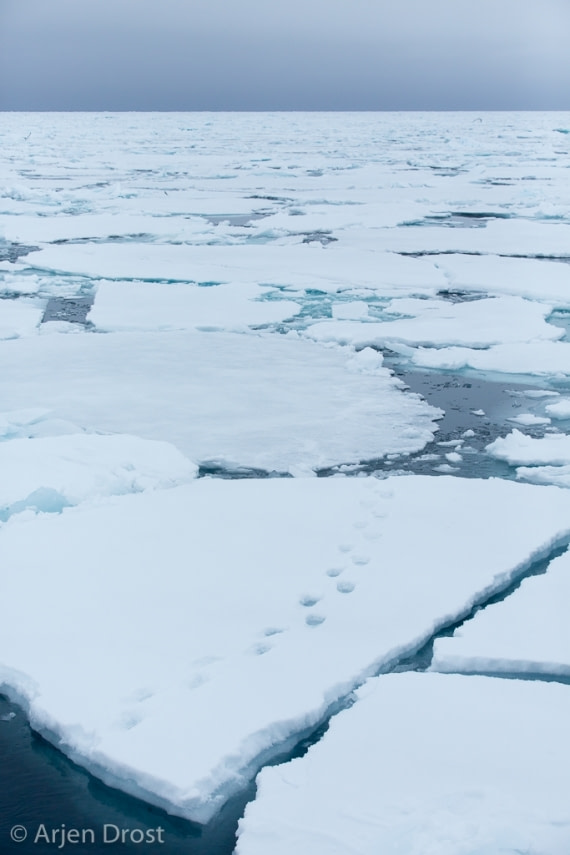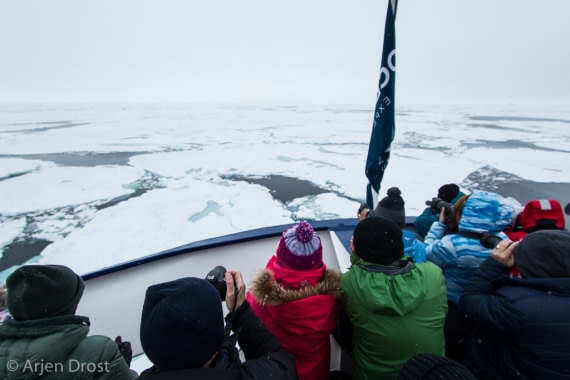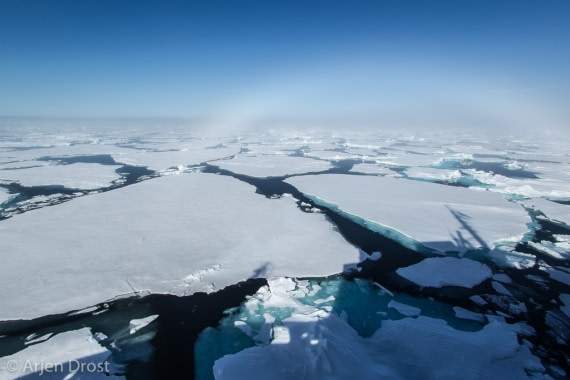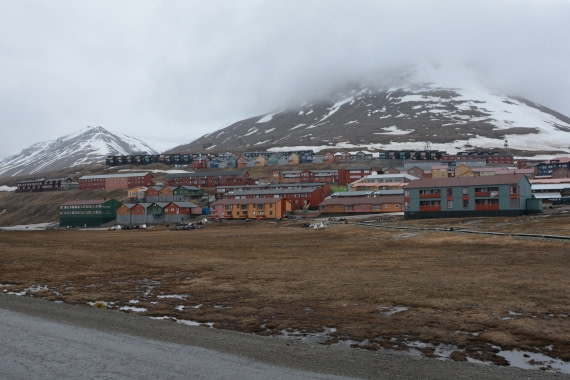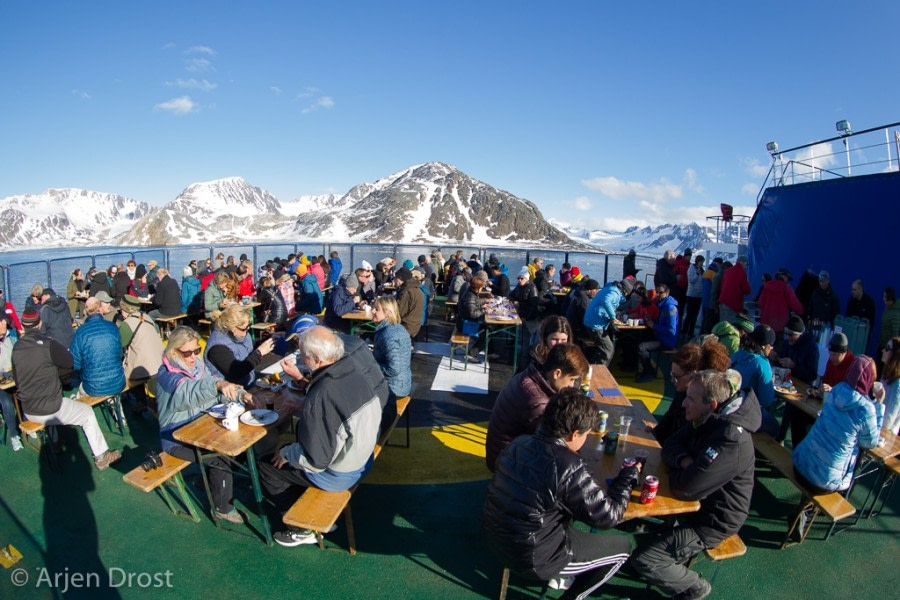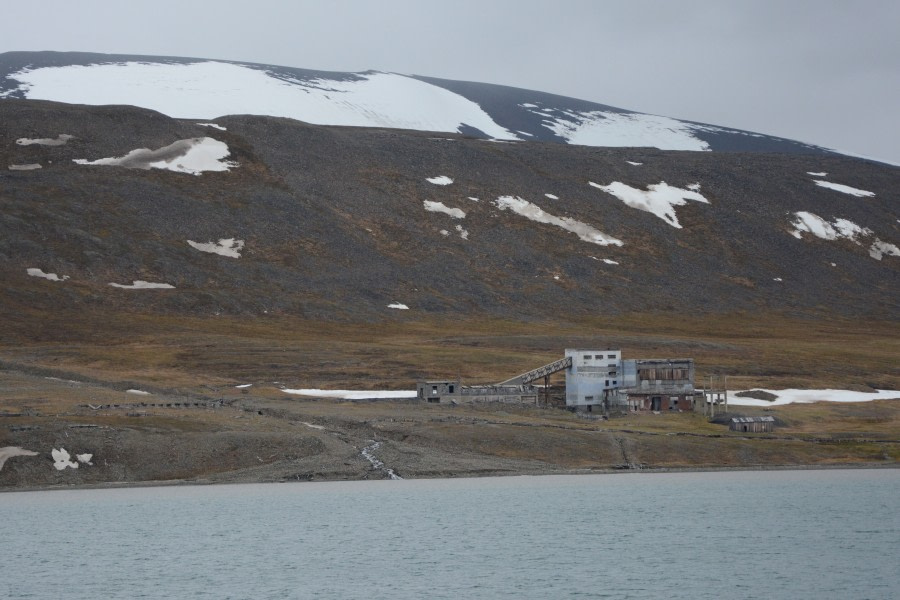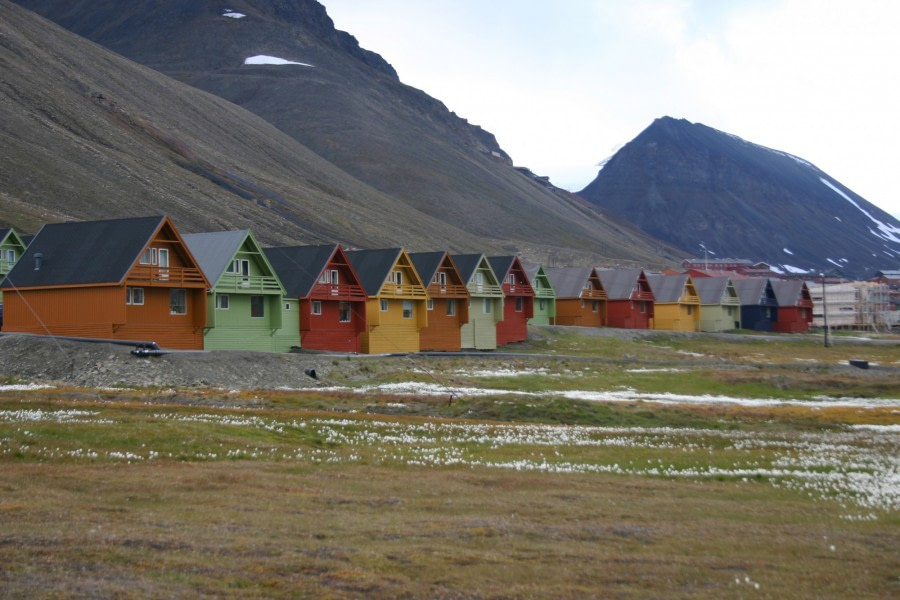| Date: |
23.06.2017 |
| Position: |
79°56,9‘ N, 013°09,5‘ E |
| Wind: |
W 3 m/s |
| Weather: |
cloudy |
| Air Temperature: |
+3.5 |
When we first looked out from the ship on Friday morning, we were a few kilometres offshore from the NW corner of the island of Spitsbergen, the largest island in the Svalbard archipelago. It was overcast with bits of low cloud and fog, occasional snow flurries, cool, and windy. But – we were surrounded by dense sea ice and that meant we might see what we all came for - polar bears! So, undeterred by the weather, and dressed in warm clothing, the bridge and the decks were soon filled with eager binocular-carrying passengers searching the sea ice, not only for bears but also for other arctic treats such as the ringed and bearded seals, walruses, and minke whales scattered at low densities throughout the ice-covered areas. For the birders, the possibility of seeing a diversity of sea birds, including such treasures as the ivory gull ensured that all eyeballs and binoculars would be glued together. In fact, the presence of large numbers of birds feeding in the pack ice surrounding the ship suggested that the waters below were rich in food, which would be good for seals and polar bears as well. But, beyond the goal of seeing a single priority species, it was the first opportunity for most of the passengers to simply observe and experience the fascinating environ-ment of the arctic pack ice.
Overall, we were extraordinarily fortunate today, especially considering that the overall visibility was not great. By the time we had finished breakfast, one of the ship’s officers on the bridge had already spotted a distant yellowy spot which, as we approached, became a bear. It was lying down and as we got closer, it stood up and looked at the ship. We could also see he was an adult male but not in particularly good condition. There was little fat on his hindquarters so his hide simply ap-peared to drop down from his hips. The bear was not afraid but it was also clear he wasn’t interest-ed in visiting as he simply began to slowly walk away. Consequently, we didn’t follow him because it is important that we not stress any of the wildlife we have come to view in their natural home.
After a few more hours of searching, Rinie spotted another distant yellowy dot lying motionless in a small pit dug into a snowdrift that had formed on a small ridge of ice. With great patience, Captain Barria skilfully moved the Ortelius to about 150 m or so from the bear. In fact, the ship’s approach was done so sensitively, the bear continued to sleep soundly after we arrived, apparently unaware of our presence. For well over an hour we studied the sleeping bear and wondered when he might get up and be a bit more active. We also knew that when bears sleep during the day out on the sea ice, they normally don’t wake for 7-8 hours, much like a human. Rather than disrupt the natural behaviour of the sleeping bear, so we could see him walk about, we briefly considered leaving him undisturbed and going to investigate a third very distant bear that appeared to be scavenging on something. However, we knew he had to wake up sometime so, since we were so well positioned, we decided to be patient and simply wait. Then however, we got a big surprise. A minke whale sur-faced and blew beside the ship, dove, and surfaced to blow again … right beside the bear! Com-pletely startled, the bear jumped up, looked at the ship, and then walked slowly over to within a few metres. The roar of camera shutters was almost deafening. After 20 minutes or so of being a star, he wandered over to a nearby crack in the ice and lay down to demonstrate how a bear still-hunts for a seal. After hunting for about another 20 minutes, he stood up and slowly walked away from the area. As he walked, we could see he was a full adult males with scars on his neck from fighting with other males over females in the breeding season and he was in fairly normal body condition for a male bear at this time of year.
Overall, these two bears provided some outstanding viewing along with some interesting insights into their life on the sea ice. Along with the abundance of birds, including an ivory gull and an arctic skua stealing a fish from a tern, several seals and, of course, our friendly minke whale, it was a wonderful first day in the sea ice.
